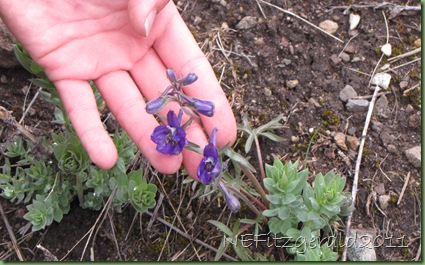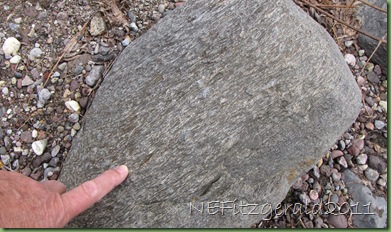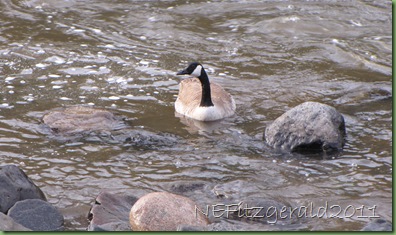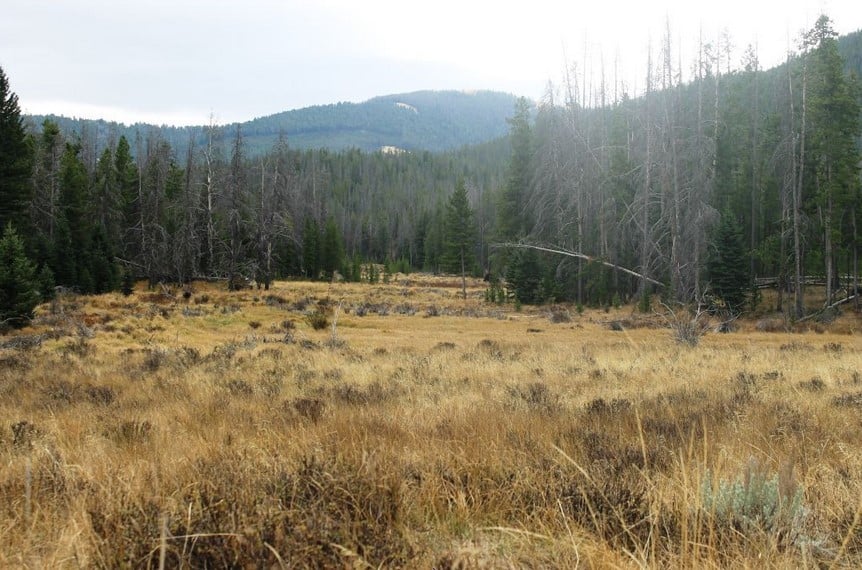I almost didn’t go on the backpack last weekend, and was surprised to hear that most everyone else had considered backing out, too. We all had our excuses, most of them pretty flimsy. But one thing we all soon agreed upon was that we sure were glad we hadn’t bailed. What a shame it would have been if we had missed it all.
The first day out dawned gray and dreary with a chance of snow or rain. I mostly didn’t want to run the risk of getting sick from staying out overnight in the cold – the first week of training for Yellowstone’s seasonal interpretive park rangers had just ended and we had another week to go. And there were the bears, of course. I knew that any midnight snuffling sound outside my tent would be enough to send me into spasms of terror. I would have to sleep (ha! like that would ever happen) with one eye open, clutching my bear spray canister in a white-knuckle grip of death, all the while hoping I wouldn’t asphyxiate myself with fear.
As it turned out, all we had to deal with were a couple of errant bison and a suspiciously inquisitive Canada goose.
Around noon we started out on the Black Tail Trail, just east of Mammoth Hot Springs in the northern part of Yellowstone. We would be going just four sweet miles to a campsite along the Yellowstone River. Prepared to do the tent thing if necessary, we all hoped that, come sunset, we would be comfortably settled in a warm Park patrol cabin and not miserably huddled on the cold, cruel ground.
 |
| Black Tail Trail, Yellowstone National Park |
 |
| Black Tail Trail |
Park rangers are a wonderfully peculiar bunch. They stop to examine and talk about nearly everything they see, and in Yellowstone, that everything is everywhere.
Hundreds of bison were migrating to a greening summer valley…
 |
| “Look! Bison!” |
 |
| Bison on the move |
 |
| Bison migration |
Elk pieces-parts were scattered about…
 |
| Elk skull with antlers |
 |
| Arrow-leaf balsamroot |
Wildflowers bloomed in early high-country spring…
 |
| Larkspur |
 |
| Shooting star |
 |
| Basalt outcrop |
And, of course, the rocks tumbled down…
 |
| Columnar basalt cliffs high on the ridge |
By the time we arrived at the cabin by the river it was three hours later and the bison were long gone. We dropped our packs to explore the nearby surroundings and then relaxed after our grueling afternoon hike.


I was excited to see glistening boulders of metamorphic rocks lying along the banks of the river, pinpoints of maroon garnets reflecting in the light. My geologic map of Yellowstone National Park shows that these are indeed Precambrian gneisses and schists but does not offer any more information about them. I understood I was standing in the Archean Wyoming Province, where the rocks can be older than 2.5 billion years, and I was thrilled. This is primordial rock, ages beyond even the 1.74 billion year old metamorphic rocks of the Beaver Dam Mountains in southwestern Utah.
 |
|
| Schist boulders in river |
 |
| Phyllite? Or just wet schist? |
 |
| Schist boulder |
 |
| Bridge across Yellowstone River |
 |
| Sun setting on Yellowstone River |
As dusk slowly descended along the river, no one else except the goose came to claim their night at the cabin. It was to be all ours, after all.



The next morning we left the cabin cleaner than we had found it and headed up the warm, sunny trail on our four mile return hike. Past the cliffs of columnar basalt and the elk skull and out into the wide valley, I paused to look back.
 |
| Black Tail Trail |
On the east side of the continental divide, Black Tail Creek carves its path through a fault in these ancient rocks. I considered how this creek was on the way to its own destiny as it drains into the Yellowstone, Missouri, and Mississippi Rivers and ultimately the Gulf of Mexico.
What a shame it would have been if I had missed it all.









